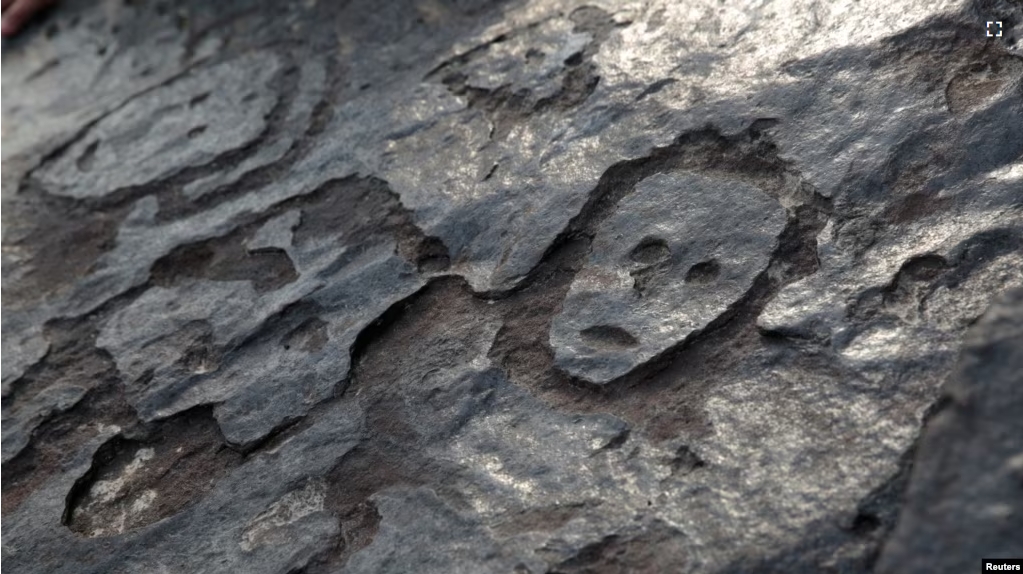Human faces cut into stone up to 2,000 years ago have again been found on a rocky area along the Amazon River in northern Brazil.
The stone carvings appeared as a result of a big drop in water levels because of dry weather in parts of northern Brazil.
People had reported some of the rock carvings before during periods when water levels were low. But now a greater number have been identified. That will help researchers establish the history of the carvings, researcher Jaime de Santana Oliveira said recently.
One area shows smooth markings in the rock thought to be where Indigenous people once sharpened their weapons such as arrows and spears before European settlers arrived.
“The engravings are prehistoric, or precolonial. We cannot date them exactly but based on evidence of human occupation of the area, we believe they are about 1,000 to 2,000 years old,” Oliveira said.
The rocky area is on the north shore of the Amazon near the place where the Rio Negro River joins the Amazon.

Oliveira said the carvings were first seen in 2010, but this year’s drought has been more severe than earlier dry periods. The Rio Negro’s levels dropped 15 meters since July, uncovering large areas of rocks and sand where there had been no beaches.
“This time we found not just more carvings, but the sculpture of a human face cut into the rock,” said Oliveira, who works for the Brazilian government’s National Historic and Artistic Heritage Institute. The organization oversees the care of historic places in Brazil.
I’m John Russell.
Suamy Beydoun reported on this story for Reuters. John Russell adapted it for VOA Learning English.
__________________________________________
Words in This Story
carving –n. a design that has been cut out of wood or stone using special tools
indigenous –adj. a thing or person that is native to an area and naturally lives there
engraving – n. the art of cutting something into the surface of stone or wood
shore – n. the land along the edge of an area of water (such as an ocean, lake, etc.)
drought – n. a long period of time during which there is very little or no rain
